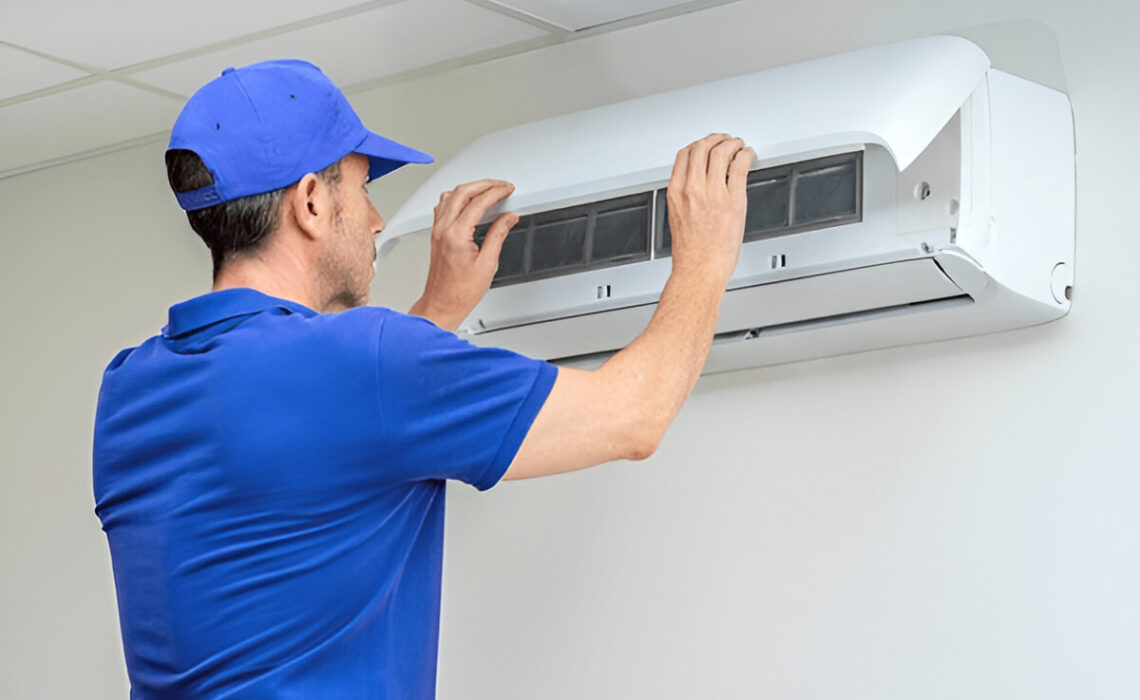
An air conditioner is one of the most prevalent electrical equipment in Australian households. It is a necessary component of any home and consumes a sizable portion of your cash for essential home appliances. Making the appropriate decision is essential since it directly affects your home’s cooling, comfort, and energy usage. There are various sorts of air conditioners, and each has its advantages and disadvantages. The market currently offers eight different types of primary air conditioning equipment. Each type of air conditioner is created for a specific area and serves a specific function.
Central Air Conditioner
This kind of air conditioning is ideal for you if you have a big house and want to chill several rooms at once. The air in your home is regulated by a split system used by a central air conditioner unit. Another name for it is a “Ducted System”.
Ductless Mini Split Air Conditioner
Ductless mini-split air conditioners are an excellent option if you want improved efficiency, want to get rid of a lot of ductworks, or just want to cool off a specific area of your home. Modern homes are a fantastic fit for ductless systems.
Window Air Conditioner
Window air conditioners are a good option if you only need to cool a single room or a small area because they come in various sizes. If you choose a big window air conditioner, you can even chill a small house if it only has one floor or one open area. Since their invention, window air conditioners have been held as the best at cooling compact rooms and are thought to be the most popular kind of air conditioner.
Portable Air Conditioner
These are like window air conditioning units. They are, likewise, contained in a single unit with all its parts enclosed inside, but this unit is free-standing and can be moved from one room to another. It only needs access to a window where the unit’s air may be vented via its funnel and a power outlet to be operational.
Floor Mounted Air Conditioner
If you want a mini-split but do not have the necessary room for a wall-mounted unit, floor mounted air conditioning systems are made for ease. Floor-mounted air conditioners have an indoor unit that rests on the floor, and the outer unit can be installed with little to no ductwork or significant site preparation. This configuration is also perfect for buildings made of delicate materials, like glass, or spaces with inclined walls, like attics. The unit is connected to the outdoor unit through a small hole in the wall and can be put up to 6 inches above the floor.
Smart Air Conditioner
Mini-split, window, and portable air conditioners with IoT capabilities are examples of smart air conditioners. These air conditioners have a native app that allows for global control through a smartphone and are Wi-Fi-connected. The features of these air conditioning systems vary depending on the manufacturer. Some of these features include:
- Geo-fencing,
- Comfortable mode,
- Temperature range management, and
- Weekly scheduling, among many others.
With their help, you may save energy while experiencing excellent comfort.
Geothermal System
Geothermal heating and cooling are a relatively new technology that relies on the earth’s natural insulating abilities. Geothermal technology takes advantage of the fact that the temperature under 4 to 6 feet of soil is constant throughout the year, independent of the weather, to heat and cool your home more effectively.
Conclusion
Choosing the right air conditioning system is a significant decision that impacts your comfort, finances, and lifestyle. There is no single “best” system; the ideal choice depends entirely on your specific circumstances. Consider the size and layout of your space, your local climate, the existing infrastructure like ductwork, and of course, your budget. By understanding the core functions, advantages, and limitations of each system type, you can confidently engage with HVAC professionals and select the perfect cooling solution to meet your needs for years to come.




